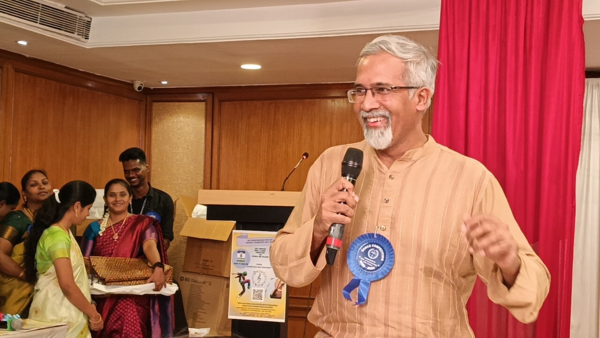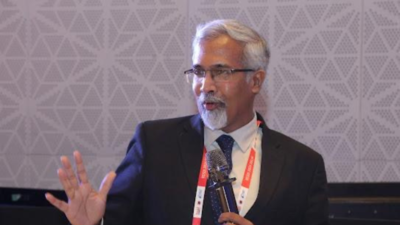Access to more tests needed to identify type 5 or lean diabetes | India News

It has for long been conjectured to be a malnutrition-related form of diabetes, but has only now been officially recognized as “Type 5” diabetes at the World Diabetes Congress in Bangkok last week. This comes 70 years after this type of diabetes was first reported. One of the lead authors of the path-breaking physiological study which established that lean diabetes is different from other kinds of the condition, Dr Nihal Thomas, professor of endocrinology at CMC Vellore, explains the implications for the efforts to prevent and treat diabetes in India and the world.

What is the prevalence of this kind of diabetes?
It is estimated that there are 25 million cases across the world. However, considering that a significant proportion of populations in sub-Saharan Africa, South and Southeast Asia belong to the lower socioeconomic category, the number could be much higher. What is happening in war-torn areas of Africa like Sudan and parts of the Congo? We really do not know. Right now, Type 2 is the most prevalent. A lower prevalence of Type 5 could be because of these cases being wrongly identified as Type 1 and Type 2 diabetes, not having the criteria and access to tests to identify Type 5, and a survey bias. We need to do at least two tests to establish it is Type 5, an ultrasound scan of the pancreas to rule out chronic pancreatitis and c-peptide test to measure the level of c-peptide in the blood, which can tell you how much insulin the body is producing. C-peptide is a by-product of insulin production from the pancreas. And GAD antibodies to rule out Type 1 diabetes. We will have to make these tests widely available so that Type 5 can be correctly diagnosed to help patients better.
How would the treatment differ?
Unlike Type 2 diabetes, which involves resistance to insulin, in Type 5 diabetes insulin resistance is not a feature. When the body cannot produce enough insulin it can lead to ketoacidosis, a condition where the body starts burning fat for energy, instead of sugars, which happens in Type 1 diabetes However, ketoacidosis does not happen in Type 5 diabetes. It appears that at least 50% of Type 5 diabetes patients can be treated with tablets and might not need insulin. But a lot of research is needed to determine what works best for managing and treating Type 5 patients. Some of them do need insulin therapy. Is that a subset of Type 5 diabetes? These are research questions that need to be taken up.
The usual advice for diabetes patients is to cut down consumption and increase physical exercise. What would be the recommendations for a person with malnutrition-related diabetes?
Insulin secretion is not just dependent on carbohydrates or glucose for stimulating it. It is also dependent on amino acids, which are the building blocks for proteins, and can also stimulate insulin production. So, will a high protein diet help? We do not know. In our study we found that many with Type 5 diabetes were habituated to a low-protein diet. We prescribed them standard diets but found that they gained some weight, but never really became obese. They improved but remained underweight. We recommend a high calorie diet. How high is something we need to find out. Though most people from lower socioeconomic sections are into physical labour, not everyone is. So, we recommend some amount of resistance exercise. We need much more research on the ground in clinical settings to determine what works for them.
If it was identified 70 years back, why was it retracted from the WHO classification as a distinct form of diabetes?
The first case was identified in Jamaica in 1955. In India, Dr BB Tripathy in Cuttack also documented cases of individuals with low BMI and diabetes from 1963 onwards. Such cases were documented in many countries including Bangladesh, Nigeria, Ethiopia Uganda, and India. It was formally recognized by the WHO in 1985, promoted by Prof Jasbir Bajaj, as a distinct form of diabetes called malnutrition related diabetes mellitus (MDRM). However, with a lack of proper physiological studies over the next 10-15 years to establish it as a distinct type, in 1999 MDRM was omitted from the classification. The people affected by it being mostly impoverished and having little support may have been an additional factor in less attention being given to its potential existence. Moreover, calling it malnutrition-related diabetes was probably not something which would encourage acknowledging it. It was unlikely that a policy maker would be too keen on saying that malnutrition was an issue in any country. A patient would also not like to have a title such as “malnutrition modulated…” for a disease. Giving it a novel nomenclature would help in addressing these issues in part, thereby fostering greater research and policy making capacity in this regard. Cumulative research from cohorts, animal studies and epidemiology from low-income populations in Asia and Africa, has shown that having antenatal undernutrition (low birth weight) along with postnatal undernutrition (childhood undernutrition) may be responsible for this condition, a lot of work being done, particularly by Prof Chittaranjan Yajnik from Pune and Prof Allan Vaag from Copenhagen.
Why did it take so long to identify this as a distinct type of diabetes
For this to be acknowledged as a distinct type of diabetes, we have to rule out all other causes for diabetes like Type 1 and 2. We had to rule out a condition called fibro calculous pancreatic diabetes occurring in tropical regions and characterized by stones in the pancreas, and which, like Type 5, showed inadequate production of insulin rather than insulin resistance. We also had to rule out genetic disorders such as maturity-onset diabetes of the young (MODY) which is caused by inherited genetic mutations that affect the body’s ability to produce insulin. We had to identify lean people with diabetes and rule out all these other conditions. The basic science study involving high end research, done by CMC Vellore in collaboration with the Albert Einstein College of Medicine in New York, took eight years, with committed and trained support staff implementing a tedious protocol and informed consent from patients willing to cooperate with repeated tests and close monitoring. It took time to establish beyond doubt that this was a distinct form of diabetes. Though it is still not back into the WHO classification, it has been endorsed at the World Congress of Diabetes in April 2025 by Dr Peter Schwarz, the president of the International Diabetes Federation, and is still on the International Classification of diseases (ICD).





